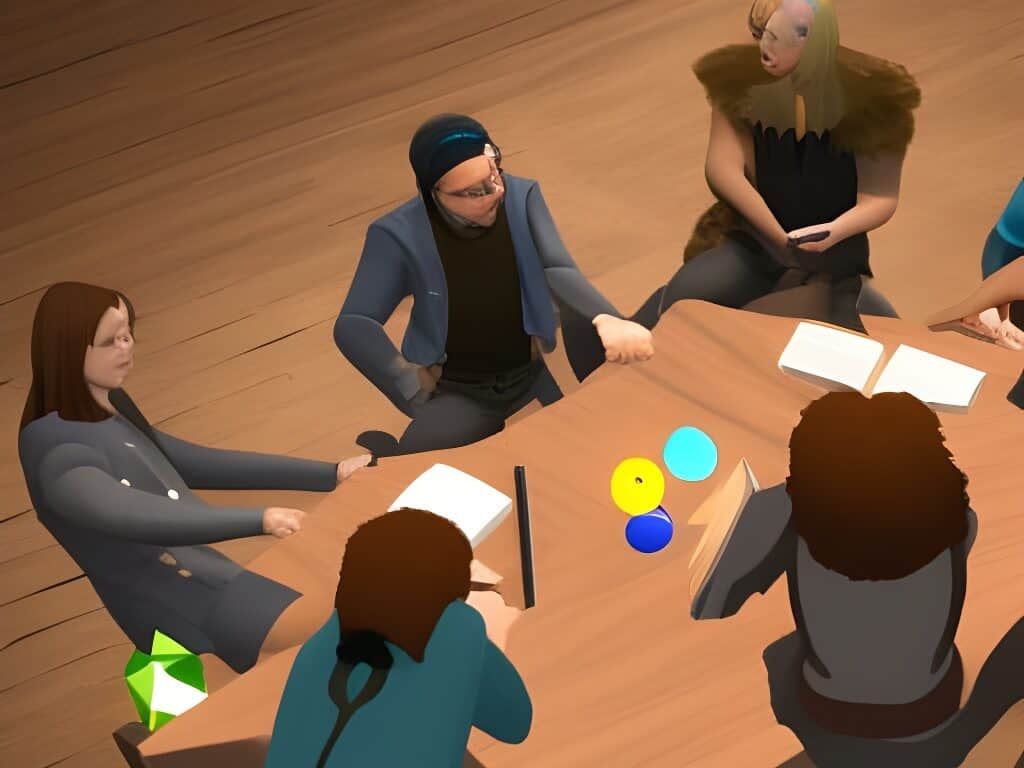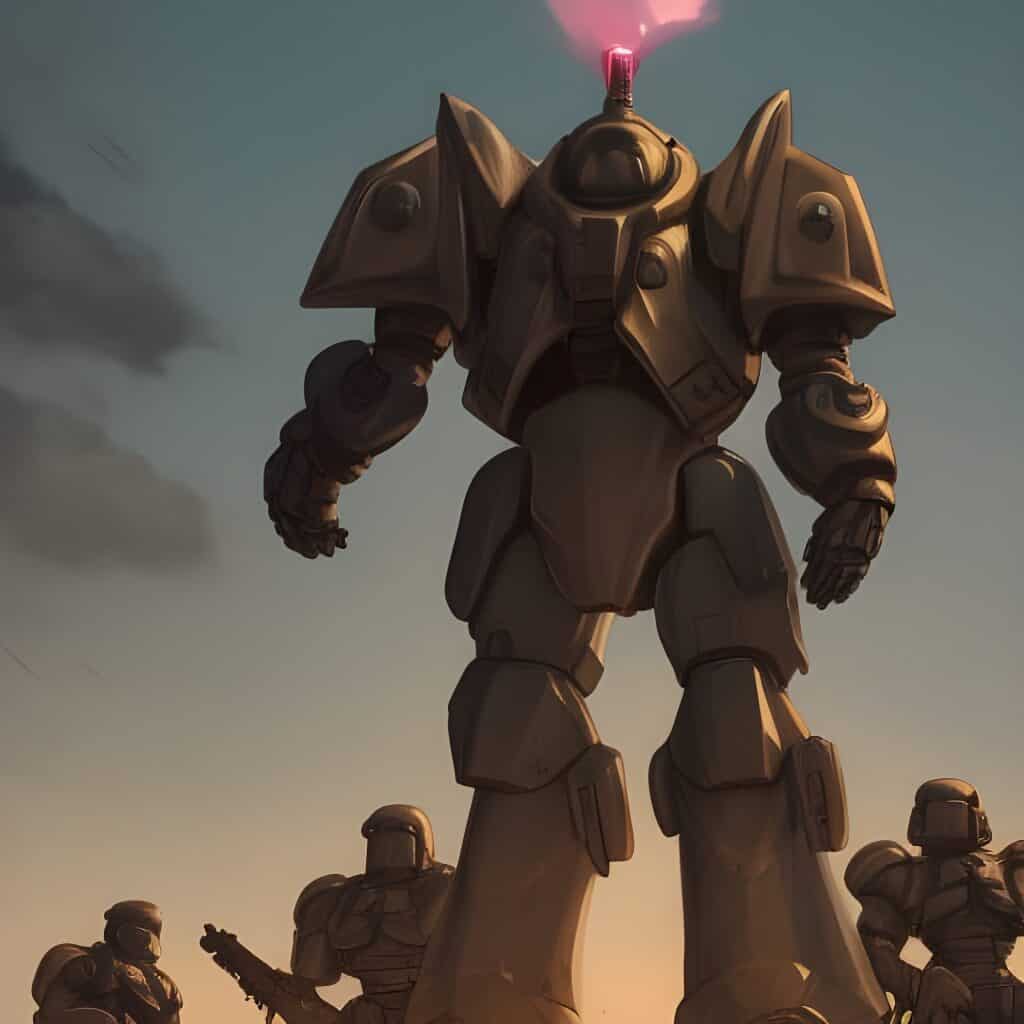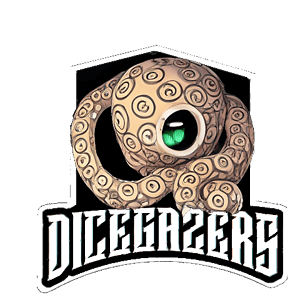Tabletop roleplaying games, also known as TTRPGs, are a type of game where players take on the roles of fictional characters and embark on adventures in a shared imaginary world. These games have been around since the 1970s. Let’s explore the history of tabletop roleplaying games and the different types of games that fall under this category.

The Origins of Tabletop Roleplaying Games
The first tabletop roleplaying game, Dungeons & Dragons (D&D), was created by Gary Gygax and Dave Arneson in 1974. Dungeons and Dragons was the first game to give players the ability to play as their character with a ruleset for advancement. Initially, the game had races with very fixed advancement options.
Those options of advancement were limited both in level and class options. In fact, if you played an Elf or Dwarf then the race was your class. You didn’t get the option to pick both. This was changed when Advanced Dungeons and Dragons came out.
In AD&D you could combine races and classes, though your level advancement was limited compared to, say, a human wizard. Humans had unlimited advancement in any class they chose, their downsize was the inability to multi-class. Other races could pick multiple classes to level up at the same time by splitting experience between the two (or rarely three). This was a great way to create character diversity and add more utility. It, unfortunately, caused advancement to slow down.

Humans on the other hand could not pick up other classes unless they entirely gave up the advancement in their prior class. If you were first a fighter, then chose to pick up mage, any adventure where you used your fighter abilities would negate experience distribution to mage. These are just some of the differences with the current state of D&D.
Dungeons and Dragons 5th edition has a linear experience gain for all classes and races. It uses stat choices, called stat arrays, rather than random dice rolls. The game has been simplified to be easier to learn for new players while still trying to maintain complexity for character progression. While DnD is the most popular game there are many other kinds.
Styles of TTRPG Gameplay
What is your preferred playstyle? Do you like espionage games, hack and slash or something else? Here is a list of ways you can describe your campaign to players to help generate interest. For players its good to know what kind of playstyle you like so you don’t join a crowd of players that conflict. That said, most games end up including multiple ideas below.
Solo TTRPG: Most people get into tabletop games because they have an interest and ask a friend to join. Or they are interested and ask someone to join them. That said some people don’t have the option to play with others, or they are hesitant to go from player to GM. Other times you just don’t have a GM available to mediate the game but you still want to play. This type of game is fantastic for those situations.
Sandbox RPGs: This term became used with video games more than TTRPGs but can be applied to them still. When you take your tabletop game and allow players to explore and adventure without restriction you are essentially allowing for a sandbox play style. This is basically the opposite of module play.
Module RPG: In a module, there is generally a set area with a very specific storyline to follow. Dnd has a ton of modules that players can play through. With the D20 system and open licensing, many other game companies created their own modules. If you have enough of these you can make your game feel like a sandbox even though players are still moving through modules.
Wargaming: Games like Warhammer 40k are essentially just you and an army fighting another person’s army on a tabletop battlefield. Now in the context of tabletop roleplaying games, you can combine this basic idea and have more large-scale battles instead of just a single character. This is more of an adaptation you implement into your TTRPG than an actual rule set, though there are probably some games that are made for this (when I discover them I’ll update this).

Hack and Slash: This is probably where most players and GMs start. This is essentially very combat-focused. It can include heavy elements of dungeon crawling but doesn’t have to.
Arena play: There are times when you want to make a character and send them against other players. This type of game is basically just an arena with no play done outside of the battlefield. It can take the form of a literal arena, or perhaps a valley, dungeon, or other areas. All of which you must navigate and fight one or more battles to test your character build.
Adventure: A focus on story, as in where does it go from one point to the next with as little hang ups on rules as possible.
Heist: Simple smash and grab style games. Most likely you are good at stealing playing some combination of thief to get in and out. Some players may want to add mage to their character combination in some fashion. In DnD it may be directly, while in other games like Rifts you may be Shifter, or specialised class from the Rifters instead.
Espionage: Information sells very well to the right buyer and this type of gameplay is focused on seeking that out.
Tabletop Roleplaying Game Genres
Fantasy: One popular type of TTRPG is the fantasy roleplaying game, which is similar to D&D and is set in a fictional world filled with magic and mythical creatures. Examples of fantasy TRPGs include Pathfinder, Shadowrun, and Warhammer Fantasy Roleplay.
Science Fiction: Another type of TRPG is the science fiction roleplaying game, which is set in a futuristic or spacefaring world. Examples of sci-fi TRPGs include Star Wars: Edge of the Empire, Traveller, and Eclipse Phase.
Horror: There are also horror roleplaying games, which are designed to evoke feelings of fear and suspense in players. Examples of horror TRPGs include Call of Cthulhu, World of Darkness, and Deadlands.
Cyberpunk: An offshoot of science fiction with an emphasis on high technology, usually cybernetics, and low life elements. The game for example has lots of homeless people in the footage, often times some being criminals. Other times the “hero” comes from a low life status.
Post-Apocalyptic: My favorite game setting is Palladium Rifts because it combines so many things. There is high technology, magic, psionics, dragons, fantasy, space, dimensional travel and so much more. Rifts Earth is set on a future Earth ravaged both by magical and natural storms, hence the post apocalypse part.

Occult: A broad category that can encompass many aspects of the supernatural. This type of game really focuses on things outside of hard science fact. Often times if you have games in the occult you include other elements like magic, horror, etc. Strict occult would mostly be modern cults worshipping “whatever” with no supernatural forces actually showing up (or that’s how I would run them).
Space opera: Oh can anyone say Guardians of the Galaxy? Run through space and save the universe, that’s what this is all about. Well perhaps that’s how the players see themselves more than anything. Mostly you are on a ship going from space problem to space problem with planetside stops here and there.
Steampunk: This is an interesting take on technology. Much of the time is expressed as being high technology but incorporates steam technology from the 19th century. Obviously a twist to the standard scie-fi setting but can work out really good in some sort of dimension spanning game. I would use it in a world where its supposed to have advanced technology but maybe average intelligence humanoids (possibly left over tech they’ve adapted).
Superhero: Superpowered beings running amock fighting superpowered villains. Marvel and DC are the two most common places for inspiration with this theme.
Modern: Hey if its your thing to play games about the modern world more power to you. It can be fun if done right but I often prefer to play in more imaginary settings. Saying that I think that World of Darkness and Heroes Unlimited do a good job with this.
World War 2 (or other war settings): Many game settings use world war 2 as a backdrop for their game setting. It gives them a lot of plots already known by many to utilize so its a fantastic idea. Doing so gives them more time to focus development on other areas of their game as well as future products.
The ideas above are in no way a full list of game styles you can play. They do give a good idea of other types you could play if you feel stuck in a rut though. This leads us to what actual game systems these settings are used in.

Popular Roleplaying Games
Most virtual tabletops that I have looked into have a huge following for DnD 5th edition. When I look up online games or local game shops I see more listings for that than others as well. So when I say DnD is the most popular it’s based on my findings.
Dnd 5th Edition: Being the most popular game you can play, and also very easy to initially understand. This is a great game to get started with for many reasons.
Star Wars: The game has had several versions come out. Many older players like the original d6 version compared to the current style but, its Star Wars and a great setting to have fun in.
World of Darkness: Horror, occult and modern are what come to mind when I think of this game system. It has a fantastic way of breaking down each part into its own book: Vampire, Werewolf, Mage, changing, etc. You can get as broad or as narrow with your game as you like. That also includes just how dark, grisly and horrific you want to be.
Pathfinder: An offshoot of Dungeons and Dragons 3rd edition. This game setting has a great following and its own storyline too. I think its distinctly different than dnd yet retains a similar feel. If you haven’t tried the Pathfinder: Kingmaker video game its also fun.
Check Roll20s game statistics last reported quarter 4 of 2021 to see what I mean about game popularity.
Less Popular TTRPGs
Magitech Chronicles: I first got into this after listening to the audiobooks. The tabletop roleplaying game is a very unique way of adding magic and high technology to a game. It has a great advancement system that really rewards roleplaying. The players are given a lot of options for building and creating new spells and items. The art is fantastic as well.
Palladium Rifts: Rifts is fantastic option for those that want to explore many elements at once. It is known for having some clunky rules but check out our other articles for ways to improve your gameplay. Not only does Rifts have post-apocalypse, but it includes so many other genres.
If you want to know how to play tabletop roleplaying games check out our other articles on that topic specifically.
Tips for Tabletop Roleplaying Games
How to Roleplay Better- Our Philosophy
